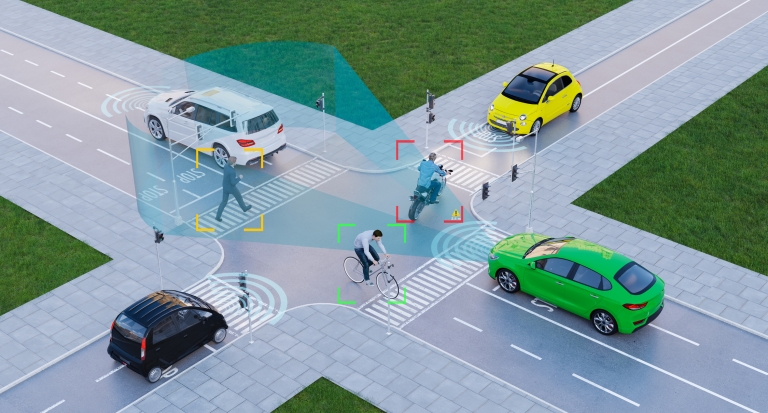
The Future of Driving: Navigating the Autonomous Vehicle Landscape

The future of transportation is evolving at an unprecedented pace. With the dawn of the 21st century, we've witnessed the rise of electric vehicles, the proliferation of ride-sharing platforms, and now, the emergence of autonomous vehicles. As we stand in 2023, the landscape of autonomous driving is not just a distant dream but a tangible reality. But what does this mean for everyday drivers? Let's delve into the world of self-driving cars and explore the implications for those behind the wheel.
The Current State of Autonomous Vehicles
While we're yet to see roads dominated by fully autonomous vehicles, there's no denying their growing popularity. Leading companies like Tesla, General Motors, and even tech giant Apple are at the forefront of this revolution, researching and producing vehicles with varying degrees of automation. Many modern cars, even those requiring a driver, now come equipped with features that significantly ease the driving task, such as self-parking and lane detection.
Understanding the Levels of Automation
To grasp the nuances of this evolution, it's essential to understand the different levels of vehicle automation as defined by SAE International:
Level 0: Traditional vehicles with no automation but may include features like emergency braking.
Level 1: Equipped with either lane centering or adaptive cruise control.
Level 2: Features both lane centering and adaptive cruise control, offering more assistance to the driver.
Level 3: A significant leap where the vehicle can drive itself in certain conditions, like traffic jams, but may require the driver's intervention occasionally.
Level 4: Near-complete automation. These vehicles might not even have a steering wheel or pedals.
Level 5: The pinnacle of self-driving technology. These cars can drive anywhere, anytime, without any human intervention.
Navigating the Legal Landscape
With the rise of these vehicles, lawmakers haven't been far behind. As of January 2023, 34 American states have rolled out legislation concerning autonomous vehicles. The laws vary widely:
States like Alabama, Arkansas, and Louisiana permit autonomous vehicles only for commercial use.
Michigan allows any automated vehicle to be tested but restricts deployment to specific networks.
On the other hand, states like Arizona, California, and Florida allow the deployment of autonomous vehicles beyond just commercial purposes.
Interestingly, not all state laws delve into the nitty-gritty, such as the need for a human operator in non-fully autonomous cars or the requirement for liability insurance.
Implications for Drivers
So, what does this mean for drivers?
Skill Evolution: As vehicles become more automated, drivers might need to adapt their skills. Understanding vehicle tech and its limitations will become crucial.
Licensing and Training: With states like Arizona requiring a licensed driver for vehicles with Level 3 automation or lower, there might be new licensing categories or additional training for drivers of semi-autonomous vehicles.
Insurance Dynamics: The insurance landscape will shift. In states where liability insurance is mandatory for autonomous vehicles, drivers might see changes in premium structures or coverage options.
Job Opportunities: As autonomous vehicles become mainstream, new job roles, from vehicle tech specialists to autonomous fleet managers, might emerge.
Safety and Trust: Drivers will need to develop trust in these vehicles. While automation promises enhanced safety, the transition period might come with its set of challenges.
Looking Ahead
The rise of autonomous vehicles is not just a technological shift but a societal one. As these vehicles become more prevalent, the very essence of driving will transform. For now, most fully autonomous vehicles are limited to short taxi rides, but soon, they might become our daily companions on long journeys.
For drivers, this era represents both challenges and opportunities. Embracing the change, staying informed, and adapting will be the keys to navigating this new world of transportation.
